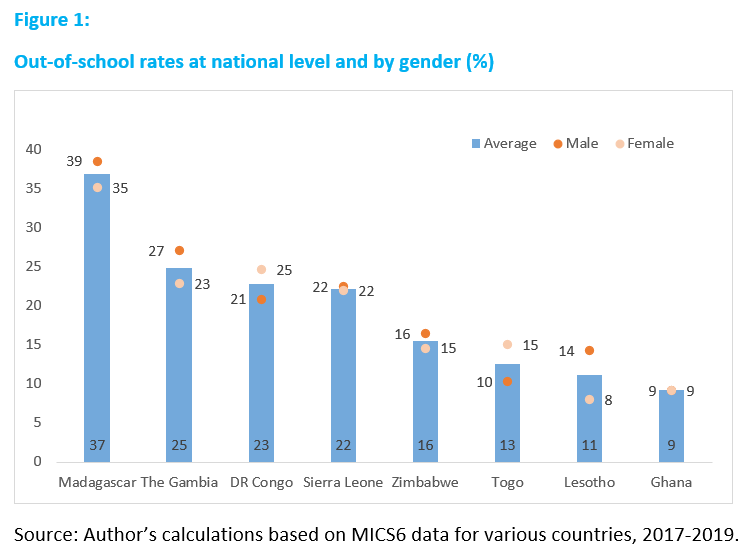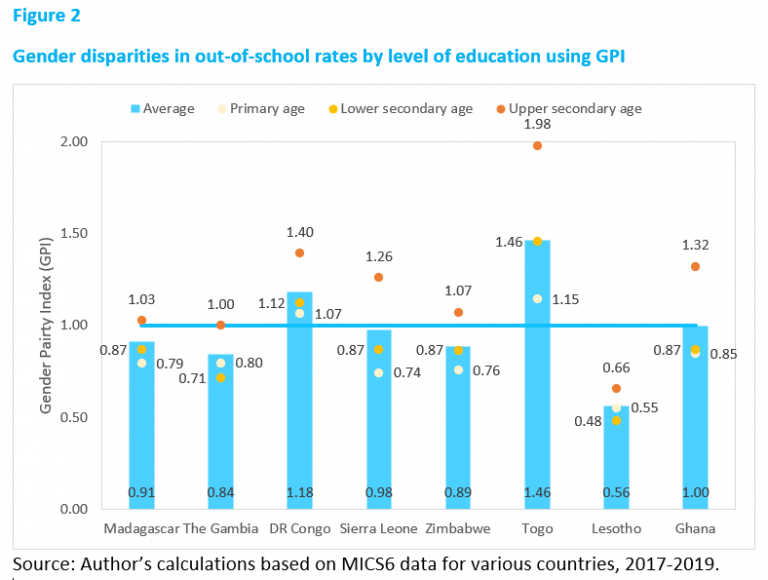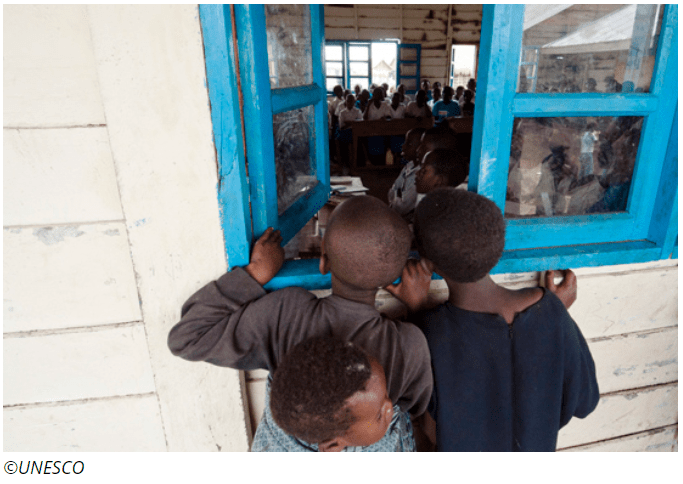Introduction
In recent years, the progress made in reducing out-of-school (OOS) figures for children, adolescents and youth has stagnated. The latest fact sheet on OOS by UIS shows that 258.4 million children are out of school globally and children from Sub-Saharan Africa are the most excluded with about 31.2% of the global total. Within the Sub-Saharan Africa region, the female OOS rate outweighs the males (52.0% vs 45.5%). By level of education, about a fifth and third of primary school and lower secondary age children are not in school respectively. Approximately, 58% of upper secondary school age youth are excluded from schooling in the African sub-region.
This blog is primarily concerned with gender dynamics in OOS rates across and within eight Sub-Saharan countries where MICS6 data are currently available. MICS6 includes additional modules on OOS which enables the monitoring of SDG 4.5.1.
Findings from MICS6
MICS6 data from the eight countries in Sub-Saharan Africa show wide disparities in OOS rates across countries. While as high as 37% and 25% of children are out-of-school in Madagascar and The Gambia, about 9% and 11% OOS rates are estimated for Ghana and Lesotho, respectively. The data show that there are more out-of-school females than male in DR Congo and Togo while the reverse is the case for countries like Madagascar, The Gambia, Lesotho and Zimbabwe.

Out-of-school rates and gender equalities of education
Gender Parity Index (GPI) is employed to assess gender equalities in OOS rates by level of education. A GPI below 1 signifies a disparity in favour of girls and a value greater than 1 indicates a disparity in favour of boys. A GPI equal to one indicates equality between males and females (Gender Parity). Globally, there are more females than males of primary school age who are out of school while most GPI values for the lower and upper secondary OOS rates are in the range of gender parity of 0.97 and 1.03 (UIS).
At country level, findings from MICS6 reveal that boys of primary and lower secondary school age have higher probability of being out of school compared to girls across all countries except Togo and DR Congo. However, in most countries except Madagascar, The Gambia and Lesotho, there are more out-of-school female youth of upper secondary school age compared to males.
The GPI estimates for DR Congo, Togo and Lesotho show consistent pattern of gender disparities across all levels of education. For instance, while DR Congo’s and Togo’s GPIs indicate more females out of school in each education level (primary, lower and upper secondary education), the GPI for Lesotho indicates more out-of-school males than females across all the education levels.
At national level, Ghana and Sierra Leone fall in the gender parity range of 0.97 and 1.03. In both countries, the national average mask gender inequalities at education levels. The GPI values for upper secondary OOS rates for Madagascar and The Gambia are in the gender parity range. This indicates that some countries are beginning to trend towards gender parity in OOS rates in Sub-Saharan Africa.

The COVID-19 global pandemic has prompted unprecedented interruption of education programs and systems. At its peak in early April 2020, country-wide school closures were implemented in about 194 countries, leaving over 90% (1.59 billion) of students out of school globally. The closure of schools has been associated with increase in dropout rates and child labor due to rise in poverty level, especially in low and middle income countries: thereby widening the existing disparities in the schooling system. It also has potential to adversely affect young girls of secondary school age as a result of possible exposure to teenage pregnancy and early marriage, particularly in the region which has been described as the home of the forgotten girl.
As many countries are planning to reopen schools, there are serious concerns on how to ensure enrolled children and youth return to schools including the marginalized ones (UNESCO). Understanding gender disparities in OOS rates at different levels of education and at country level will help government, policymakers and donors to plan better with gender lens in their bids to retain already enrolled students and increase access to schools, especially to the most vulnerable children and youth.
About The Author
Oladayo Abayomi Adebayo is a principal consultant at R-DATS Consulting. He is a seasoned researcher, impact evaluator, demographer, statistician and data protection specialist.
